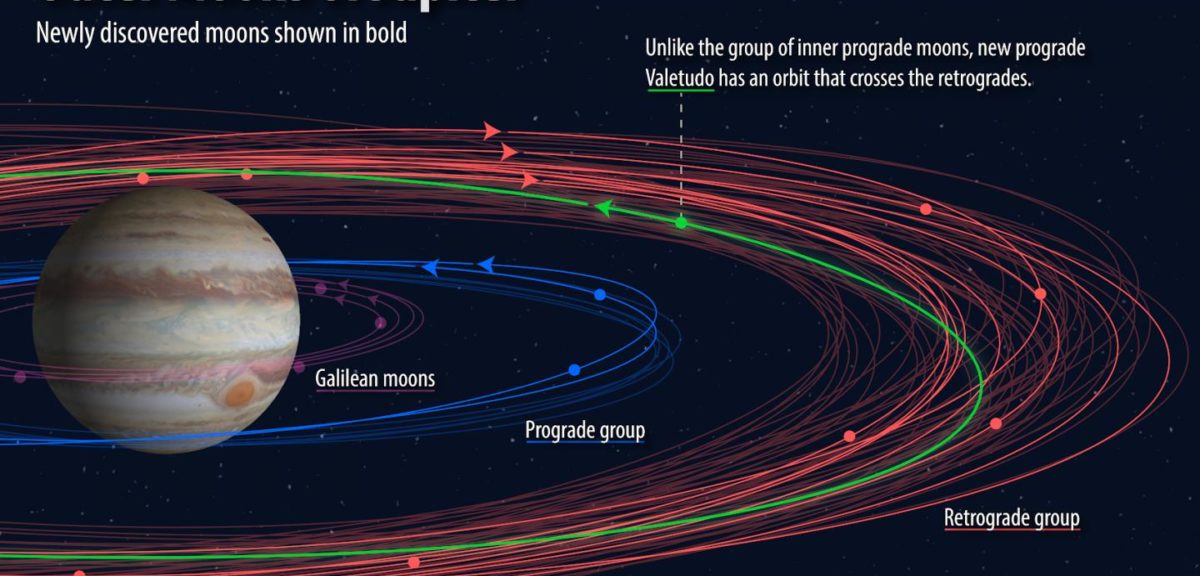As a team of astronomers was looking beyond Pluto for the mysterious Planet 9.
So far they haven’t located the giant hypothetical planet, but they did wind up discovering a dozen new moons orbiting Jupiter.
“Jupiter just happened to be in the sky near the search fields where we were looking for extremely distant Solar System objects, so we were serendipitously able to look for new moons around Jupiter while at the same time looking for planets at the fringes of our Solar System,” said team leader Scott Sheppard from the Carnegie Institution for Science in a press release.
The astronomers call 11 of them “normal” outer moons, but they label the twelfth an “oddball.”
The “oddball” is called Valetudo, named for the great-granddaughter of the Roman god, Jupiter. The Greek mythology equivalent of Valetudo is the goddess Hygieia. Both were considered to be the goddesses of medicine or health.

May 2018 recovery images of Valetudo from Carnegie’s Magellan telescope’s at our Las Campanas Observatory in Chile. The moon can be seen moving relative to the steady-state background of distant stars. Jupiter is not in the field but off to the upper left. (Carnegie Institution for Science)
They found that the “oddball” moon has a prograde orbit, which means it orbits in the same direction as its planet.
But, unlike Jupiter’s other prograde moons the odd new moon’s orbit happens to cross the path of others orbiting in retrograde, or the opposite direction, setting up the possibility of a collision.
Sheppard calls the oddball moon’s orbit ‘an unstable situation’ and that a head-on collision would quickly ‘break the objects apart and grind them down to dust’.
A number of ground-based telescopes located in Chile and the United States were used to make the discovery of the new moons of Jupiter.
Observations made by the Sheppard team were used by Gareth Williams at the International Astronomical Union’s (IAU) Minor Planet Center to calculate the orbits of the newly found moons.
“It takes several observations to confirm an object actually orbits around Jupiter,” Williams said. “So, the whole process took a year.”
Discovery of the 12 objects brings the total of known Jovian moons to 79.
Back in 2014 Sheppard and his colleague Chad Trujillo at Northern Arizona University were the first scientists to theorize about the existence of a giant planet in the outer solar system that is now being called Planet 9.
Two years later in January 2016 Caltech’s Konstantin Batygin and Mike Brown, who picked up on what Sheppard and Trujillo found, announced that they had actually found evidence of such a giant planet traveling in an odd and drawn out orbit in the far reaches of the solar system.






















Comments are closed.